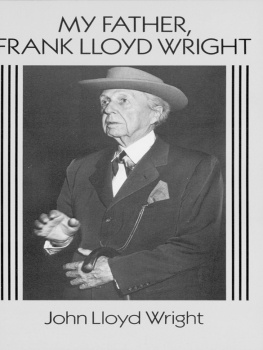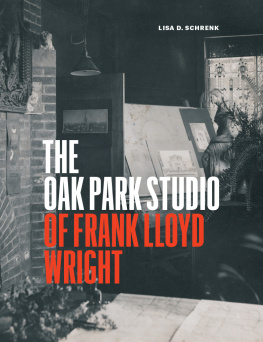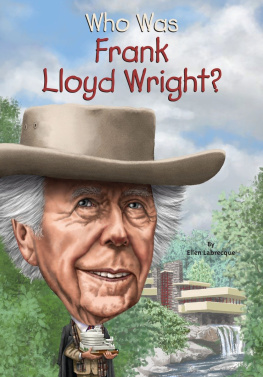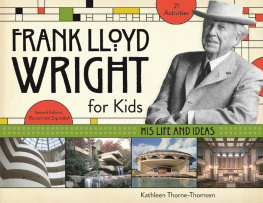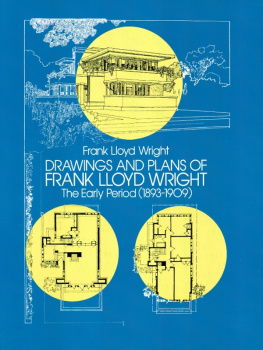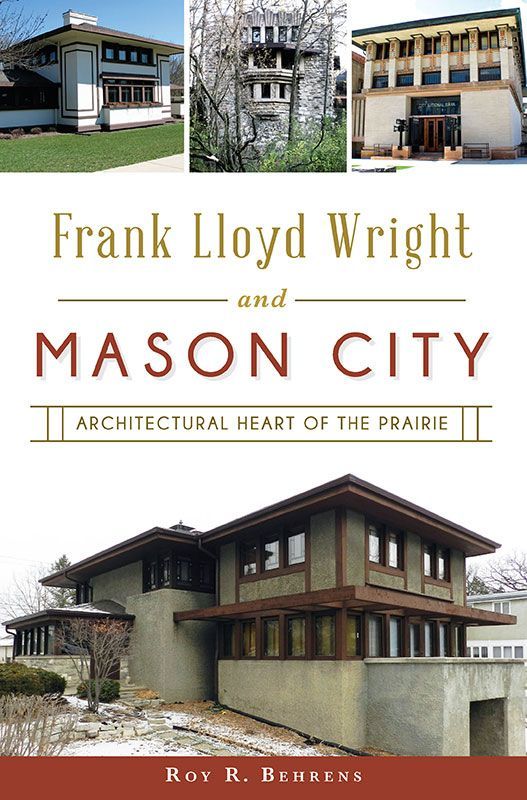

Published by The History Press
Charleston, SC
www.historypress.net
Copyright 2016 by Roy R. Behrens
All rights reserved
Foreword copyright 2016 by Ann Elias
First published 2016
e-book edition 2016
ISBN 978.1.62585.718.7
Library of Congress Control Number: 2016947478
print edition ISBN 978.1.46711.860.6
Notice: The information in this book is true and complete to the best of our knowledge. It is offered without guarantee on the part of the author or The History Press. The author and The History Press disclaim all liability in connection with the use of this book.
All rights reserved. No part of this book may be reproduced or transmitted in any form whatsoever without prior written permission from the publisher except in the case of brief quotations embodied in critical articles and reviews.
In memory of Merle Armitage (18931975), who was born in Mason City. A friend of Frank Lloyd Wright, he went on to become the art director of Look magazine and one of the most innovative book designers of the twentieth century.
High above the prairie, platter-flat, the wind wings on, bereft and wild its lonely song.
W.O. Mitchell
We have left less than one-tenth of one percent of our prairie. The rest of it died to make Iowa safe for soybeans.
Loren Lown
[The Rock Crest/Rock Glen neighborhood in Mason City, Iowa, is] the most successfully realized Prairie School development anywhere in America.
Alasdair McGregor
CONTENTS
FOREWORD
There is an ornamental lake in the center of the city of Canberra, the federal capital of Australia: Lake Burley Griffin. It was named to commemorate the American architect and urban planner Walter Burley Griffin, who in 1912, with his collaborator and wife, Marion Mahony, won an international competition to design the nations future capital city. As Burley Griffin later emphasized, his plan for Canberra was for an ideal city where the beauty of nature and the needs of community would be met in the harmony of landscape and town planning. It was the Prairie School philosophy brought to the Antipodes, an approach to urban design and architecture associated with the Griffins but also Frank Lloyd Wright. Unfortunately, the Canberra commission ended badly, with Griffin protesting in national newspapers a breach of faith. He eventually departed Australian shores, but not before leaving an indelible impression on Australian culture by raising the appreciation of native flora and redesigning parts of the city of Sydney, including the suburb of Castlecrag, where his philosophy was to integrate houses with native trees and local sandstone landforms.
The story of the Griffins in Australia involves vast physical distances traveled and vast cultural distances encountered, especially their experience of the gap between progressives and traditionalists. A parallel story is told here in this revelational book by Roy Behrens of how Walter Burley Griffin, Marion Mahony and their more famous associate Frank Lloyd Wright also bridged the cultural divide between the metropolis and margins to bring modernism to Mason City, Iowa. The triumphs, battles and disappointments of these visionary architects are a large part of the story that unfolds under the analytical and often witty pen of the author. Readers will learn how, from 1908 to 1912, the Griffins and Frank Lloyd Wright left the mark of the Prairie School on a bank, a hotel and a neighborhood and how, in order for Griffin to accept the Canberra commission, he had to leave in abeyance the design of a neighborhood of houses in Mason City known as Rock Crest/ Rock Glen.
In this book, the author deftly weaves the various threads that make up the remarkable story of how Americas great architects enriched the aesthetics and social life of Mason City. He reveals a palimpsest woven of folklore, history, politics and culture. He shows us the context for the architectural languages written over the city by Frank Lloyd Wright, Walter Burley Griffin and Marion Mahony and erased by the foibles of progress, only to be restored and rescued in recent times. For Behrens, though, the restorations are a breathtaking triumph in building design that reaffirms human achievement.
In this book, the clear and engaging voice of Roy Behrens gives us much more than broad strokes: he intrigues through a historians fascination with coincidences, events and surprises, and he enlightens with a designers fascinated eye for space, forms, materials and illusions. Mason City, as told by Behrens, is a passionate story emanating from a scholar who is himself immersed in the landscape and history of Iowa. We reach the end of the book with a sense of the wholeness of history, not dissimilar to the concept of the total work of art that informed the Prairie School.
ANN ELIAS
Dr. Ann Elias is associate professor in art theory at Sydney College of the Arts, University of Sydney, Australia. Her research interests include camouflage as a military, social and aesthetic phenomenon; flowers and their cultural history; and coral reef imagery of the underwater realm. Her books include Camouflage Australia: Art, Nature, Science and War (University of Sydney Press, 2011); Useless Beauty: Flowers and Australian Art (Cambridge Scholars Publishing, 2015); and Camouflage Cultures: Beyond the Art of Disappearance, edited by Ann Elias, Ross Harley and Nicholas Tsoutas (Sydney University Press, 2015).
ACKNOWLEDGEMENTS
For more than twenty years, I have taught a university course on the history of modern-era design. Like this account of Mason City architecture, the lectures in that course begin around 1850 and progress toward the present time. The ideas in this book took shape over the years as I was preparing those lectures.
This project required a number of trips to Mason City, about two hours from our farm. My wonderful wife, Mary Synder Behrens, was unwaveringly supportive, as she invariably has been throughout our years of married life.
I also gained considerably from conversations about Frank Lloyd Wright, the Griffins and Prairie School architecture with Robert E. McCoy (an authority on Rock Crest/Rock Glen and owner of the Blythe House) and Peggy Bang (owner of the Melson House), as well as informal exchanges with Iowa friends and Prairie School enthusiasts, among them Geraldine Schwarz (a Mason City native), Paul and Anita Whitson, Rick Knivsland (of the Friends of Cedar Rock) and Richard H. Behrens.
As I searched for photographs, Mary Markwalter (director of the Mason City Public Library) and Terry Harrison (its historian and archivist) were especially helpful. I was also enormously pleased when historian Ann Elias agreed to contribute a foreword, which is an especially suitable way to underscore the link between Mason City and Sydney, Australia. I am also indebted to the editors at The History Press for suggesting that I take this on and for all their diligent work in enabling it to become a reality.
INTRODUCTION
Soon after his arrival in the United States, a young German architect named Richard Neutra was walking through the neighborhoods of the Hyde Park area of Chicago looking for Prairie School houses.
Earlier, in a European library, he had seen the Wasmuth Portfolio, an album of early buildings by American architect Frank Lloyd Wright. Now, he had come to Chicago to search for one of Wrights most admired designs: the famous Frederick C. Robie House on Woodlawn Avenue.


